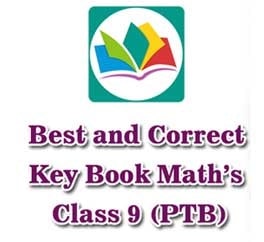SWOT Analysis is a strategic planning tool used to evaluate the Strengths, Weaknesses, Opportunities, and Threats involved in a project or in a business venture. It involves specifying the objective of the business venture or project and identifying the internal and external factors that are favorable and unfavorable to achieving that objective.
STRATEGIC AND CREATIVE USE OF S.W.O.T ANALYSIS
Strategic Use: Orienting SWOTs to An Objective
Illustrative diagram of SWOT analysis
If SWOT analysis does not start with defining a desired end state or objective, it runs the risk of being useless. A SWOT analysis may be incorporated into the strategic planning model. An example of a strategic planning technique that incorporates an objective-driven SWOT analysis is SCAN analysis. Strategic Planning, including SWOT and SCAN analysis, has been the subject of much research.
- Strengths: attributes of the organization those are helpful to achieving the objective.
- Weaknesses: attributes of the organization those are harmful to achieving the objective.
- Opportunities: external conditions those are helpful to achieving the objective.
- Threats: external conditions those are harmful to achieving the objective.
Identification of SWOTs is essential because subsequent steps in the process of planning for achievement of the selected objective may be derived from the SWOTs.
First, the decision makers have to determine whether the objective is attainable, given the SWOTs. If the objective is NOT attainable a different objective must be selected and the process repeated.
Creative Use of SWOTs: Generating Strategies
If, on the other hand, the objective seems attainable, the SWOTs are used as inputs to the creative generation of possible strategies, by asking and answering each of the following four questions, many times:
- How can we Use each Strength?
- How can we Stop each Weakness?
- How can we Exploit each Opportunity?
- How can we Defend against each Threat?
Ideally a cross-functional team or a task force that represents a broad range of perspectives should carry out the SWOT analysis. For example, a SWOT team may include an accountant, a salesperson, an executive manager, an engineer, and an ombudsman.
SWOT analysis may limit the strategies considered in the evaluation. "In addition, people who use SWOT might conclude that they have done an adequate job of planning and ignore such sensible things as defining the firm's objectives or calculating ROI for alternate strategies."
Internal and external factors
The aim of any SWOT analysis is to identify the key internal and external factors that are important to achieving the objective. SWOT analysis groups key pieces of information into two main categories:
- Internal factors – The strengths and weaknesses internal to the organization.
- External factors – The opportunities and threats presented by the external environment.
The internal factors may be viewed as strengths or weaknesses depending upon their impact on the organization's objectives. What may represent strengths with respect to one objective may be weaknesses for another objective. The factors may include all of the 4P's (People, Place, Promotion, Price); as well as personnel, finance, manufacturing capabilities, and so on. The external factors may include macroeconomic matters, technological change, legislation, and socio-cultural changes, as well as changes in the marketplace or competitive position. The results are often presented in the form of a matrix.
SWOT analysis is just one method of categorization and has its own weaknesses. For example, it may tend to persuade companies to compile lists rather than think about what is actually important in achieving objectives. It also presents the resulting lists uncritically and without clear prioritization so that, for example, weak opportunities may appear to balance strong threats.
It is prudent not to eliminate too quickly any candidate SWOT entry. The importance of individual SWOTs will be revealed by the value of the strategies it generates. A SWOT item that produces valuable strategies is important. A SWOT item that generates no strategies is not important.
Avoiding Errors
- Conducting a SWOT analysis before defining and agreeing upon an objective (a desired end state). SWOTs should not exist in the abstract. They can exist only with reference to an objective. If the desired end state is not openly defined and agreed upon, the participants may have different end states in mind and the results will be ineffective.
- Opportunities external to the company are often confused with strengths internal to the company. They should be kept separate.
- SWOTs are sometimes confused with possible strategies. SWOTs are descriptions of conditions, while possible strategies define actions. This error is made especially with reference to opportunity analysis. To avoid this error, it may be useful to think of opportunities as "auspicious conditions".
Examples of SWOTs
Strengths and weaknesses
- Resources: financial, intellectual, location
- Cost advantages from proprietary know-how and/or location
- Creativity (ability to develop new products)
- Valuable intangible assets: intellectual capital
- Competitive capabilities
- Effective recruitment of talented individuals
Opportunities and threats
- Expansion or down-sizing of competitors......LPK
- Market trends
- Economic conditions
- Expectations of stakeholders
- Technology
- Public expectations
- All other activities or in activities by competitors
- Criticisms by outsiders
- Changes in markets
- All other environmental condition
Use of SWOT Analysis
The usefulness of SWOT analysis is not limited to profit-seeking organizations. SWOT analysis may be used in any decision-making situation when a desired end-state (objective) has been defined. Examples include: non-profit organizations, governmental units, and individuals. SWOT analysis may also be used in pre-crisis planning and preventive crisis management.
Corporate planning
As part of the development of strategies and plans to enable the organization to achieve its objectives, then that organization will use a systematic/rigorous process known as corporate planning. SWOT alongside PEST/PESTLE can be used as a basis for the analysis of business and environmental factors.
- Set objectives – defining what the organization is intending to do
- Environmental scanning
- Internal appraisals of the organisations SWOT, this needs to include an assessment of the present situation as well as a portfolio of products/services and an analysis of the product/service life cycle
- Analysis of existing strategies, this should determine relevance from the results of an internal/external appraisal. This may include gap analysis which will look at environmental factors
- Strategic Issues defined – key factors in the development of a corporate plan which needs to be addressed by the organization
- Develop new/revised strategies – revised analysis of strategic issues may mean the objectives need to change
- Establish critical success factors – the achievement of objectives and strategy implementation
- Preparation of operational, resource, projects plans for strategy implementation
- Monitoring results – mapping against plans, taking corrective action which may mean amending objectives/strategies.
Human resources
A SWOT carried out on a Human Resource Department may look like this
| Strengths | Weaknesses | Opportunities | Threats |
| Developed techniques for dealing with major areas of HR, job evaluation, psychometric testing and basic training | Reactive rather than pro-active; needs to be asked rather than developing unsolicited ideas | New management team, wanting to improve overall organizational effectiveness through organizational development and cultural management programmers | HR contribution not recognized by top management who by-pass it by employing external consultants |
A SWOT carried by an individual manager could look like this:
| Strengths | Weaknesses | Opportunities | Threats |
| Enthusiasm, energy, imagination, expertise in subject area, excellent track record in specialized area | Not good at achieving results through undirected use of personal energies, trouble at expressing themselves orally and on paper – may have ideas but these come over as incoherent, management experience and expertise limited | More general management opportunities requiring development of new managers | De-centralization having the effect of removing departments where the individual is employed and eliminating middle management layers to form flatter structure of organization |
Marketing
In competitor analysis, marketers build detailed profiles of each competitor in the market, focusing especially on their relative competitive strengths and weaknesses using SWOT analysis. Marketing managers will examine each competitor's cost structure, sources of profits, resources and competencies, competitive positioning and product differentiation, degree of vertical integration, historical responses to industry developments, and other factors.
Marketing management often finds it necessary to invest in research to collect the data required to perform accurate marketing analysis. As such, they often conduct market research (alternately marketing research) to obtain this information. Marketers employ a variety of techniques to conduct market research, but some of the more common include:
- Qualitative marketing research, such as focus groups
- Quantitative marketing research, such as statistical surveys
- Experimental techniques such as test markets
- Observational techniques such as ethnographic (on-site) observation
- Marketing managers may also design and oversee various environmental scanning and competitive intelligence processes to help identify trends and inform the company's marketing analysis.
Using SWOT to analyse the market position of a small management consultancy with specialism in HRM.
| Strengths | Weaknesses | Opportunities | Threats |
| Enthusiasm, energy, imagination, expertise in subject area, excellent track record in specialized area | Not good at achieving results through undirected use of personal energies, trouble at expressing themselves orally and on paper – may have ideas but these come over as incoherent, management experience and expertise limited | More general management opportunities requiring development of new managers | De-centralization having the effect of removing departments where the individual is employed and eliminating middle management layers to form flatter structure of organization |
| Expertise at partner level in HRM consultancy | Unable to deal with multi-disciplinary assignments because of size or lack of ability | Identified market for consultancy in areas other than HRM | Other small consultancies looking to invade the marketplace |
| Track record – successful assignments |
Aleem Ahmed Qureshi
Top Contributors
Related Articles
Muneeb Ahmed serves as the Director of CMACED- Centre for Entrepreneurship Development
- Ilmkidunya
- 10/Apr/2025
Strategies to Improve Computer Security for Small Businesses | Effective Cybersecurity Practices
- Ilmkidunya
- 07/Apr/2025
Former Provincial Minister Ibrahim Murad’s Efforts Boost Pakistan’s Meat Exports by 55% to $431M in 9 Months
- Team Ilmkidunya
- 24/May/2024











































